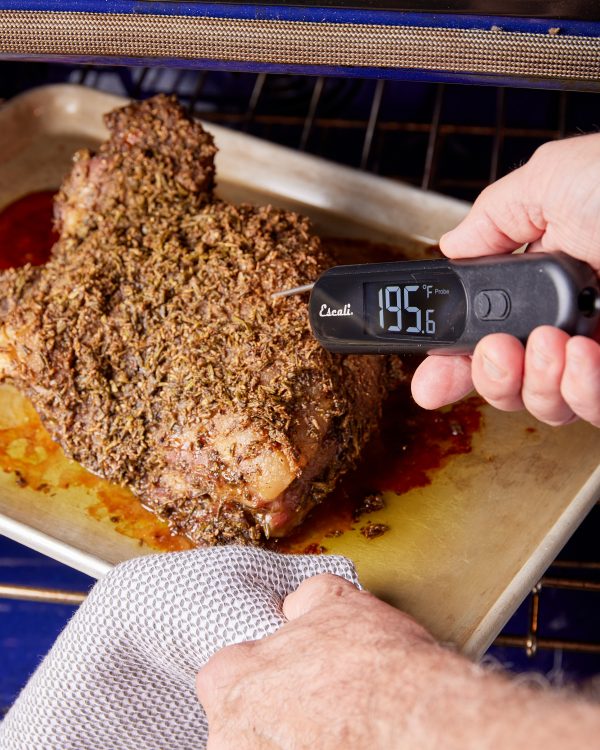Roasts generally fall into two categories: lean roasts (including pork loin and beef tenderloin) derived from little-used muscles, and tough, working cuts laced with fat and connective tissue. While lean roasts should be cooked quickly to prevent them from drying out, tougher cuts—such as the pork shoulder used in this take on Tuscan-style porchetta—benefit from more time in the oven at low heat, which allows the collagen to break down, tenderizing and moistening the meat. After many tests, we found that taking the cut to 195°F in a 300°F oven yielded the most tender, succulent results.
SHOPPING
Be sure to buy a boneless pork shoulder butt, not a boneless picnic roast; both are shoulder cuts, but the butt has a better shape for this recipe. Also, we call for ⅓ cup fresh rosemary, which is about 1 ounce (or one plastic clamshell container).
TIP
Roasting meat on a baking sheet, rather than in a roasting pan, promotes air circulation, accelerating cooking and boosting browning. And don’t cut short the porchetta’s resting time. The roast is easier to slice after it rests. Use the time while the meat rests to throw together a parsley-caper sauce that’s a perfect foil to the richness of the meat.

The most tender, moist pork shoulder roast requires a low-and-slow approach. Collagen begins to break down at 160°F, but simply reaching that temperature isn’t enough. The roast must stay at or above 160°F long enough to melt the collagen, but not so long that it loses moisture. In our testing, the sweet spot was cooking the pork to 195°F in a 300°F oven, which takes about four hours. Less time didn’t allow the collagen to break down sufficiently, and longer produced meat that was dry.
Related Recipes
November - December 2023

Sign up to receive texts
Successfully signed up to receive texts!
We'll only send our very best offers - Like a $15 store credit to start.
By entering your phone number and submitting this form, you consent to receive marketing text messages (such as promotion codes and cart reminders) from Christopher Kimball's Milk Street at the number provided, including messages sent by autodialer. Consent is not a condition of any purchase. Message and data rates may apply. Message frequency varies. You can unsubscribe at any time by replying STOP or clicking the unsubscribe link (where available) in one of our messages. View our Privacy Policy and Terms of Service.






